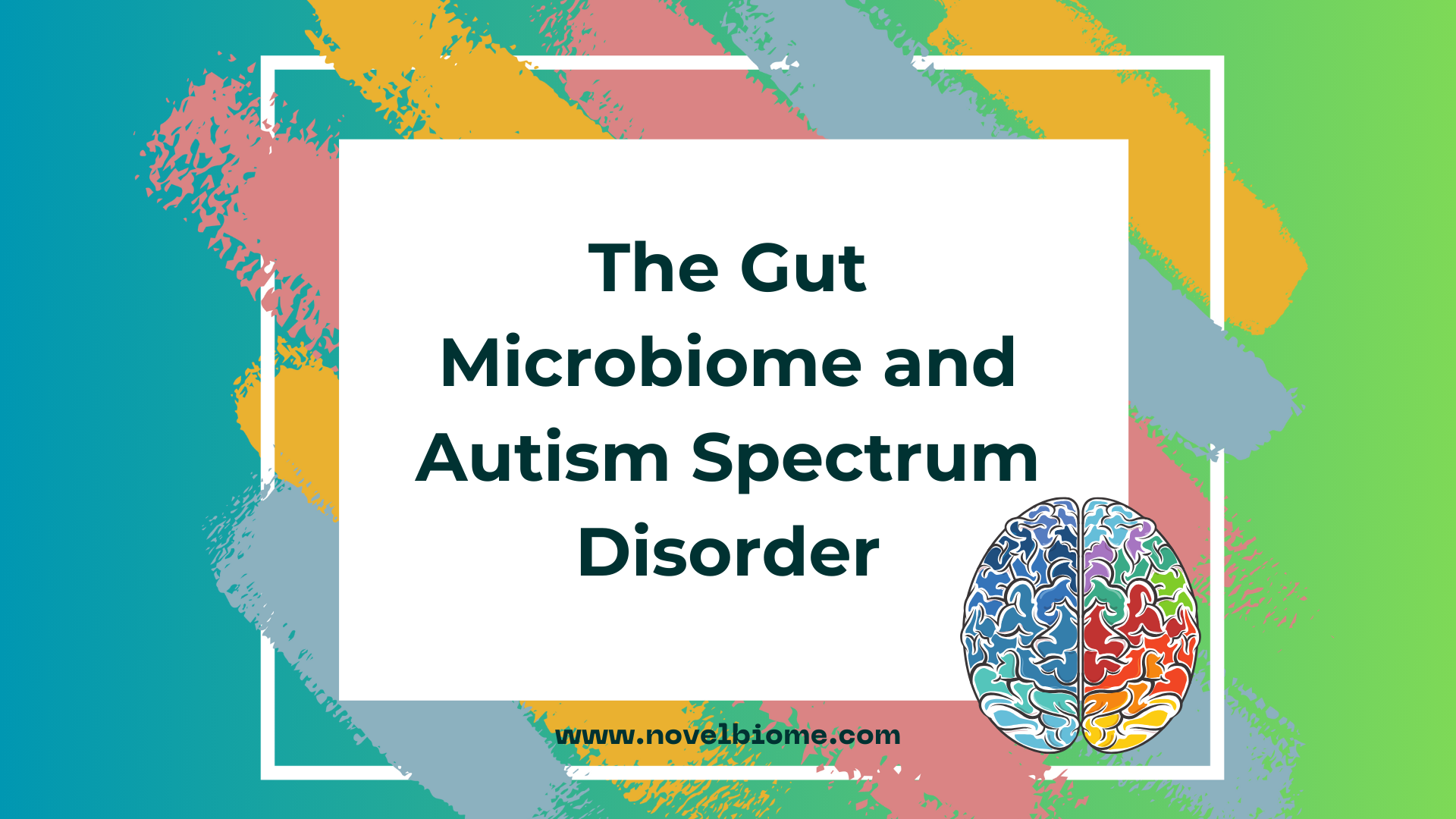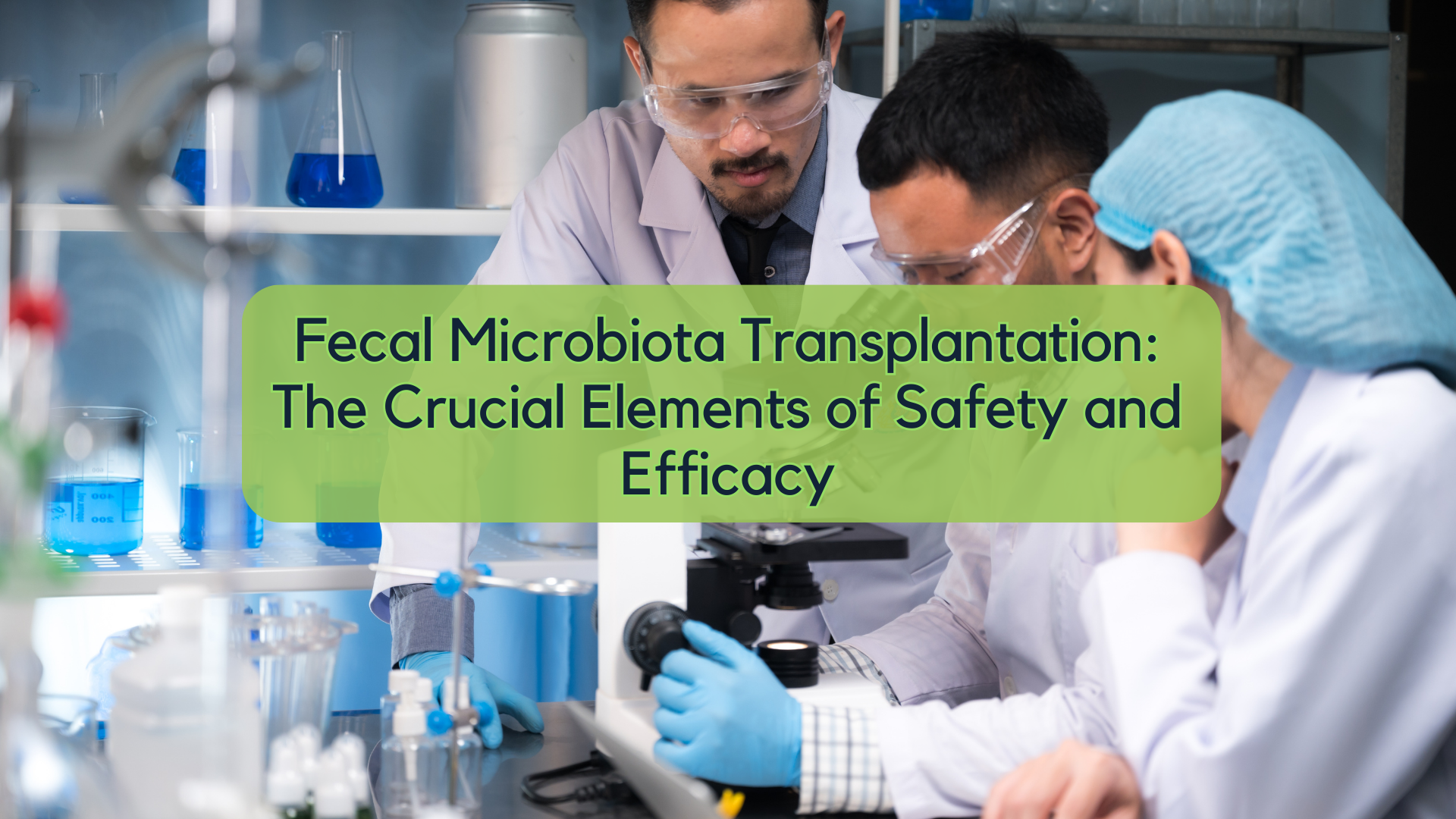In recent years, research has illuminated the intricate relationship between our gut microbiota and the development of various disorders, including Autism Spectrum Disorder (ASD) 1–17. If you're curious about how the trillions of microorganisms residing in our gut may influence ASD and how fecal microbiota transplantation (FMT) is emerging as a potential treatment, you're in the right place. Let's delve into the research and better understand the connection between the gut microbiome and autism and what we know about FMT as a treatment option.
The Gut Microbiome and Autism
Did you know that our gut hosts a thriving community of microorganisms? Collectively known as the gut microbiome, these microscopic inhabitants play a pivotal role in shaping our health and the development of various chronic conditions 2,18–24. Recently, research has unveiled a potential link between the gut microbiome and autism spectrum disorder (ASD), a complex neurodevelopmental disorder 14,25,26.
Emerging evidence suggests that alterations in the gut microbiota composition may play a crucial role in the pathogenesis of ASD 27–35. Though clinical research is still in its early stages, there are some consistent findings in the literature. Differences in the composition and diversity of gut bacteria have been observed in individuals with ASD 8,15,25,32,35–49. Moreover, a higher prevalence of gastrointestinal (GI) issues has been reported in children with autism, further suggesting a connection between the gut microbiome and ASD 3,5,14,17,32,41,50.
Fecal Microbiota Transplantation and Autism
While the mechanisms are still being elucidated, evidence indicates that an imbalance in the gut microbiome could contribute to the GI issues and behavioural symptoms experienced by individuals with ASD 1,5,6,8,12,15,25,41. This has led to a growing interest in fecal microbiota transplantation (FMT) as a potential therapeutic approach.
FMT involves the transfer of specially prepared stool material from a healthy donor into the gastrointestinal tract of a recipient 18,51–53. Although research on FMT and ASD is in its infancy, and more clinical trials are needed, initial findings are promising. FMT has shown considerable potential in its ability to alleviate symptoms associated with GI complications and, in some cases, reduce the severity of certain ASD-related symptoms. Generally, these studies have found that FMT treatment in children with ASD leads to:
1. Improvements in Gastrointestinal Symptoms, with studies showing improvements lasting 2 years 29,54,55
2. Improvements in autism-related symptoms, with studies showing improvements lasting 2 years 29,54,55
3. A shift in the gut microbiome towards TD children 29,30,54–56
4. Changes in neurotransmitter levels 55,56
5. Changes in ASD severity 54
In summary, the gut microbiome's role in autism opens up new possibilities for innovative treatments. While research on FMT as a therapy for autism is still in its early stages, it offers an exciting experimental approach with preliminary results indicating potential benefits. However, further large-scale clinical research studies are essential to establish the safety, efficacy, and long-term effects of FMT in treating ASD. Stay tuned as we continue to unravel the mysteries of the gut microbiome and its impact on ASD.
At Novel Biome, we're passionate about the importance of the gut microbiome and the transformative potential of Fecal Microbiota Transplantation (FMT) treatment to restore health. As an FMT contract manufacturer, we leverage our years of experience in FMT to manufacture high-quality FMT products utilizing our highly-screened donors and stringent manufacturing standards. If you are interested in learning more about our FMT products and manufacturing capabilities, please contact us HERE or to register as a clinical partner to order FMT products, click HERE.
Reference: 1. Adams, J. B. et al.2011, 2. Bresalier, R. S. & Chapkin, R. S. 2020, 3. Chaidez, V. et al. 2014, 4. Ferguson, B. J. et al. 2019, 5. Fouquier, J. et al. 2021, 6. Fulceri, F. et al. 2016, 7. Gorrindo, P. et al. 2012, 8. Huang, M. et al. 2021, 9. Maenner, M. J. et al. 2012, 10. Marler, S. et al. 2017, 11. Mazefsky, C. A. et al. 2014, 12. Nikolov, R. N. et al. 2009, 13. Peeters, B. et al. 2013, 14. Restrepo, B. et al. 2020, 15. Tomova, A. et al. 2015, 16. Valicenti- McDermott, M. et al. 2006, 17. Wang, L. W. et al. 2011, 18. Choi, H. H. & Cho, Y.-S. 2016, 19. Chung, H.-J. et al. 2018, 20. Fan, Y. & Pedersen, O. 2021, 21. Hooper, L. V. et al. 2012, 22. Perez-Muñoz, M. E. et al. 2017, 23. Sommer, F. & Bäckhed, F. 2013, 24. Wilson, B. C. et al. 2019, 25. Ding, X. et al. 2020, 26. Yang, Y. et al. 2018, 27. Hsiao, E. Y. 2014, 28. Hsiao, E. Y. et al. 2013, 29. Kang, D.-W. et al. 2017, 30. Kang, D.-W. et al. 2020, 31. Li, N. et al. 2019, 32. Liu, Z. et al. 2021, 33. Malkki, H. 2014, 34. Sharon, G. et al. 2019, 35. Wang, M. et al. 2019, 36. Coretti, L. et al. 2018, 37. De Angelis, M. et al. 2013, 38. De Angelis, M. et al. 2015, 39. Finegold, S. M. et al. 2010, 40. Huang, H. et al. 2019, 41. Jendraszak, M. et al. 2021, 42. Kang, D.-W. et al. 2013, 43. Liu, S. et al. 2019, 44. Ma, B. et al. 2019, 45. Plaza-Díaz, J. et al. 2019, 46. Pulikkan, J. et al. 2018, 47. Wan, Y. et al. 2021, 48. Wang, L. et al. 2011, 49. Zhang, M. et al. 2018, 50. Coury, D. L. et al. 2012, 51. Gupta, S. et al. 2021, 52. Ser, H.-L. et al. 2021, 53. Xu, M.-Q. 2015, 54. Kang, D.-W. et al. 2019, 55. Li, N. et al. 2021, 56. Qureshi, F. et al. 2020.


 By: Dr. Shaina Cahill, Ph.D. (Director Of Operations and Medical Affairs)
By: Dr. Shaina Cahill, Ph.D. (Director Of Operations and Medical Affairs)





